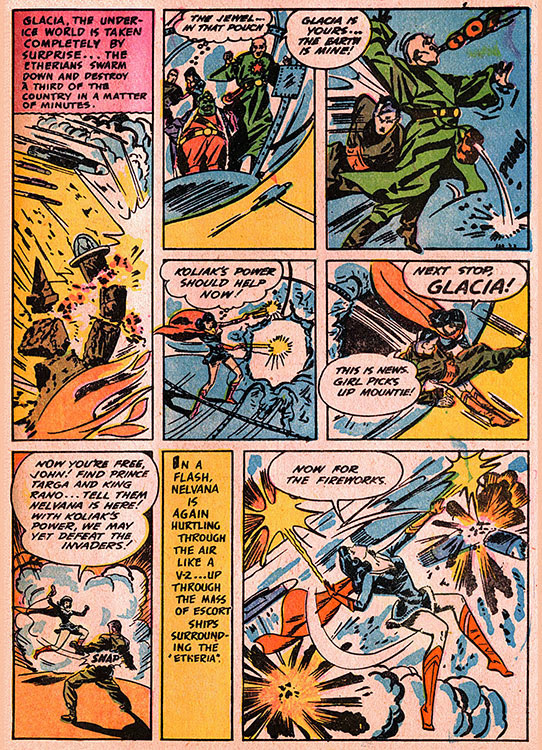Here's a heroine who lives in the Polar Vortex all year long...
...in her never-reprinted final (and only full-color) adventure from F E Howard Publications' Super Duper Comics #3 (1947)!
Considering
Nelvana's previous appearance was a couple of years earlier in a book from another publisher, creator/writer/artist Adrian Dingle thoughtfully brought us up-to-date with a synopsis before continuing...
Helluva way to end the series, eh?
As to why this was her only color appearance...
Originally, Canada imported American comic books and pulp magazines, filling their newstands with Superman, The Shadow, and loads of other American characters.
But, when World War II broke out, Canada banned all "non-essential" imports, including comics and pulps!
This opened up a whole new industry for Canadian writers and artists to finally do their own characters!
One major difference between the American and Canadian comic books was
that the World War II Canadian books were black and white inside, not
four-color like American comics!
(British comics were also b/w inside until the 1950s, when they started using a second color on some books.)
Some American companies licensed Canadian publishers to reprint US comics, but the interiors for those were b/w as well.
In addition, there was a limit to how much "non-Canadian content" could
be included in Canadian magazine print runs, so there were
relatively-few American reprints during the war.
After the war ended American comics were again imported, so most
Canadian publishers began doing color insides to compete with the
imports.
BTW, despite being #3, this was the only issue of Super Duper Comics!
And, it was the first appearance of the Golden Age
Mr Monster in costume as seen
HERE!

































